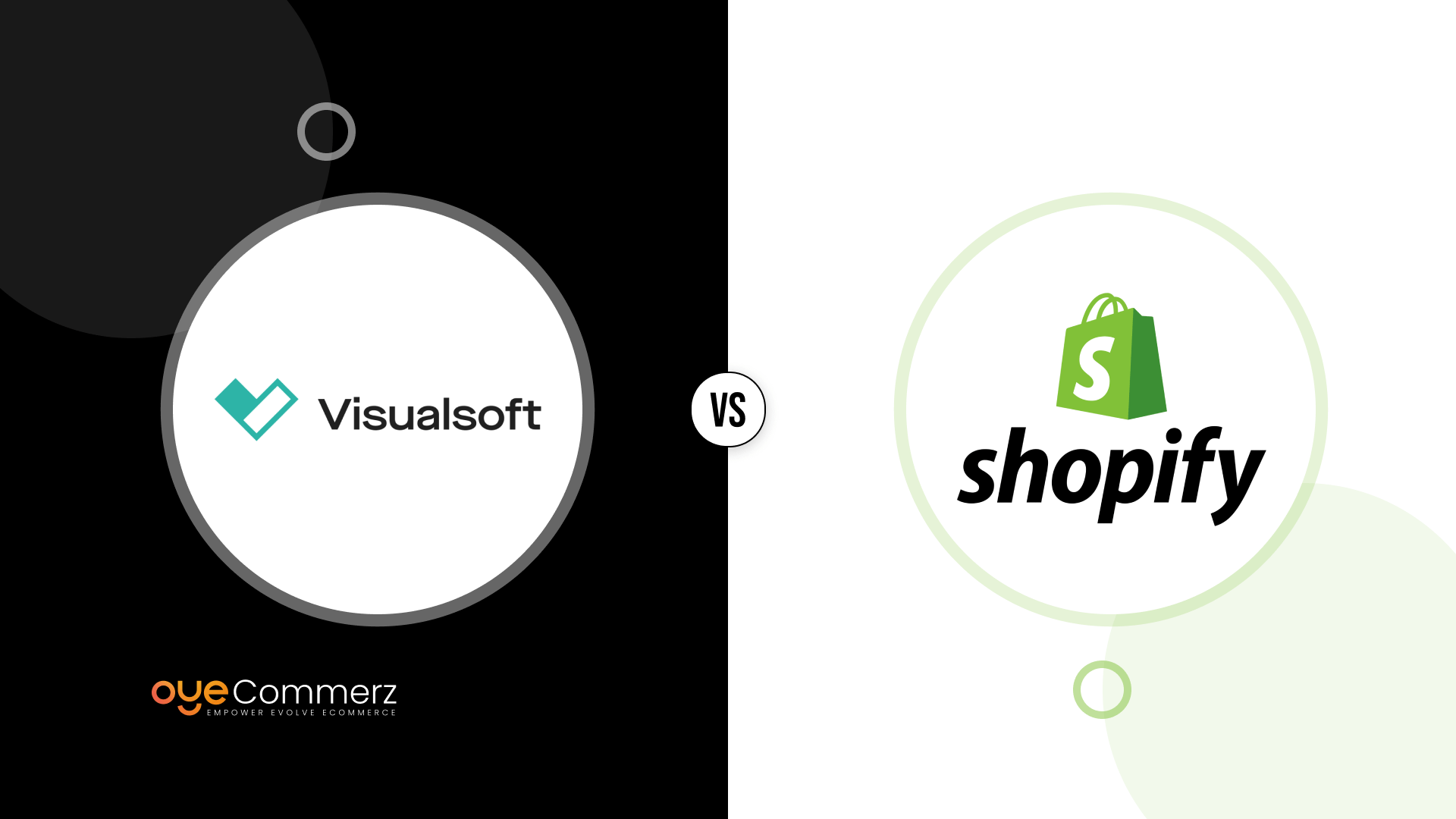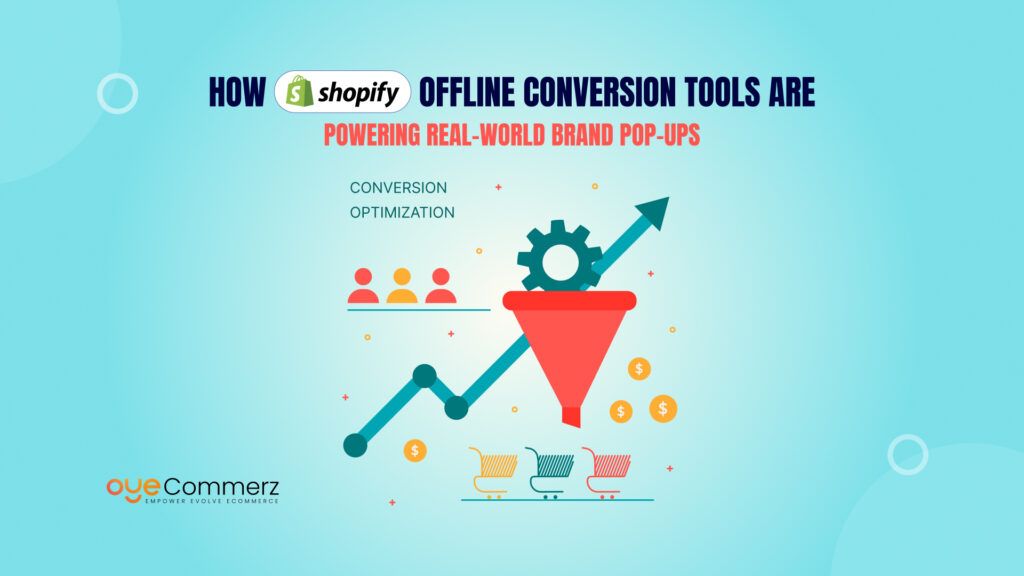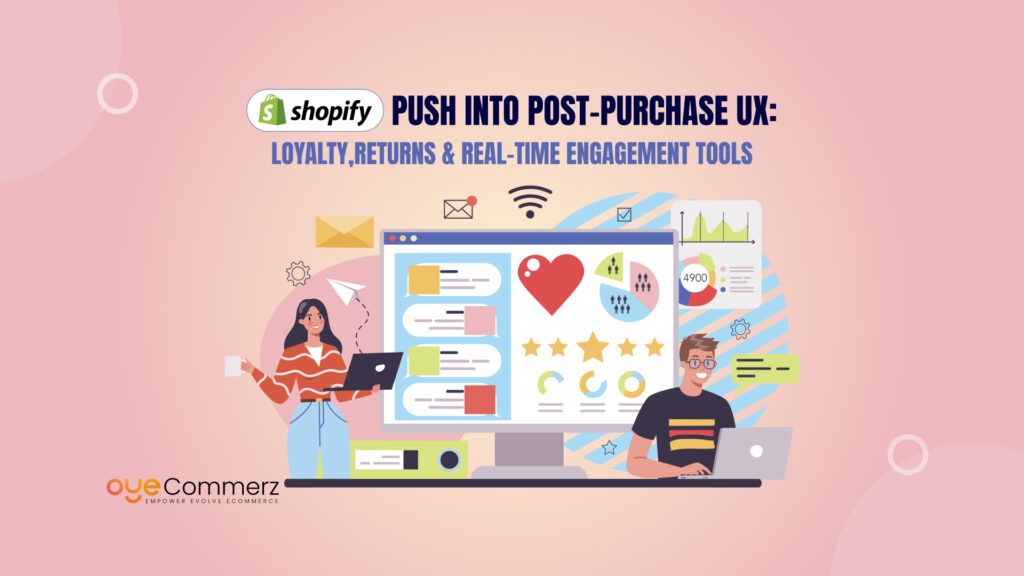Choosing the right eCommerce platform can make or break your online business. With so many options available, it’s essential to understand how each platform aligns with your goals. Visualsoft and Shopify are two popular choices, each offering unique features tailored to different business needs. Whether you’re looking for flexibility, scalability, or ease of use, knowing the strengths and limitations of these platforms is crucial. In this blog, we’ll dive into a detailed comparison of Visualsoft and Shopify, covering their features, pricing, support, and overall usability. By the end, you’ll have the insights needed to decide which platform is the best fit for your business. Let’s explore how these platforms stack up and what they can offer you.
Table of Contents
ToggleIntroduction to Visualsoft and Shopify

Choosing the right e-commerce platform is a pivotal decision for any business. While both Visualsoft and Shopify offer excellent solutions for online selling, their core functionalities cater to different types of users.
Visualsoft, a UK-based platform, takes a full-service approach to e-commerce. It offers bespoke design, marketing services, and ongoing support, making it a good fit for businesses that prefer a hands-off approach to the technical side of online retail. Visualsoft prides itself on providing a fully customized solution for each client, with a pricing model based on the success of your store.
In contrast, Shopify is one of the most popular e-commerce platforms in the world, offering a self-service solution for businesses of all sizes. With its user-friendly interface, vast app ecosystem, and scalability, Shopify is designed to empower businesses that want more control over their store and the ability to manage day-to-day operations themselves. Shopify’s versatility makes it a favorite for entrepreneurs, startups, and enterprises alike.
Ease of Use
When it comes to ease of use, Shopify is often considered one of the most intuitive platforms on the market. Its drag-and-drop editor, pre-built themes, and app integrations make setting up a store simple, even for those with little technical knowledge. You don’t need to hire a developer to launch a Shopify store, and you can start selling quickly after signing up.
Shopify’s clean and organized interface allows users to manage products, orders, and inventory seamlessly. It also offers a mobile app, so you can manage your store on the go.
Visualsoft, on the other hand, takes a different approach. Since it provides a more tailored solution, businesses usually work closely with Visualsoft’s team to set up their store. Visualsoft’s platform is not as self-service-oriented as Shopify, and this can be both a positive and a negative, depending on your preferences. If you prefer to leave the technical aspects to professionals, Visualsoft’s team will handle the heavy lifting, but this means you may have less control and flexibility in making day-to-day changes to your store.
Key Takeaways:
- Shopify: Highly intuitive, easy to use, with a drag-and-drop interface.
- Visualsoft: More hands-off with a full-service approach, but less control for the user.
Customization and Design Options
Customization plays a significant role in making your store stand out. Both Visualsoft and Shopify offer ways to create unique e-commerce experiences, but they differ in the extent of customization they allow.
Visualsoft is known for its bespoke design services. Each store is custom-built to meet the specific needs of the client, offering a high level of customization. This is great for businesses that need a unique look and feel, but it also means that the initial setup can take longer compared to Shopify, which allows you to start with a pre-built theme.
With Shopify, you have access to over 70+ customizable themes, which are mobile-responsive and optimized for SEO. Shopify also allows you to further customize these themes using HTML, CSS, and JavaScript if you have coding skills or want to hire a developer. For those without coding knowledge, Shopify’s Theme Editor still provides ample customization options, such as changing fonts, colors, and layouts.
Key Takeaways:
- Shopify: Extensive customization options through themes and coding, ideal for users who want control over design.
Visualsoft: Offers bespoke, high-quality designs managed by their team, perfect for businesses needing a unique look but with less day-to-day design control.
Pricing Models
Understanding the pricing models of each platform is key to making a decision, as the costs associated with running an e-commerce store can quickly add up.
Shopify offers a transparent and tiered pricing structure, starting at $39/month for the Basic plan, and scaling up to $399/month for the Advanced plan. Shopify also offers an enterprise-level solution called Shopify Plus, which provides additional features and customization options for large businesses.
Each plan comes with a range of features, including website hosting, unlimited product listings, and access to Shopify’s app ecosystem. However, some features, such as advanced reporting or third-party shipping rates, are only available in the higher-tier plans.
Visualsoft operates on a performance-based pricing model, meaning that its fees are based on a percentage of your sales. While this can be beneficial for businesses just starting out, as there is no fixed monthly fee, it can become costly as your sales grow. Visualsoft’s model is also more complex, as the exact fees depend on the custom services and support you require.
Key Takeaways:
- Shopify: Transparent, tiered pricing plans starting at $39/month.
- Visualsoft: Performance-based pricing with no fixed monthly cost, but higher fees as sales increase.
E-Commerce Integrations and Apps
The ability to integrate third-party tools and apps is essential for expanding your e-commerce store’s functionality. In this regard, Shopify leads the pack with its Shopify App Store, which offers over 6,000 apps covering everything from marketing automation and inventory management to SEO and customer support.
Shopify’s App Store allows users to easily extend the functionality of their stores without needing to code. Whether you want to integrate with your email marketing platform or add a live chat feature, Shopify makes it simple. The sheer number of apps available is one of Shopify’s greatest strengths, offering flexibility and scalability for businesses of all sizes.
Visualsoft, on the other hand, focuses more on in-house solutions. While it does offer some integrations, its ecosystem is not as robust as Shopify’s. Visualsoft clients often rely on the platform’s internal services for marketing, SEO, and other functionalities. This can be a good thing for businesses that prefer to have all their services managed by one provider, but it also limits flexibility compared to Shopify’s extensive app marketplace.
Key Takeaways:
- Shopify: Offers thousands of apps and integrations through the Shopify App Store, making it highly versatile.
- Visualsoft: Limited third-party integrations but offers strong in-house solutions for marketing and SEO.
Performance and Site Speed
Site speed is a critical factor for SEO rankings and user experience. In today’s fast-paced world, customers expect websites to load quickly, and a slow site can lead to higher bounce rates and lower conversion rates.
Shopify is known for its fast and reliable performance. Shopify’s global hosting infrastructure ensures that your store loads quickly for users all around the world, and its platform is designed to handle traffic spikes during sales events or high-traffic periods.
Visualsoft also offers good performance, particularly for businesses that opt for custom hosting solutions. However, site speed can vary based on the specific setup and services chosen. Visualsoft works closely with its clients to ensure optimal performance, but this often requires more technical input compared to Shopify’s more automated approach.
Key Takeaways:
- Shopify: Fast and reliable with global hosting infrastructure.
- Visualsoft: Offers customized hosting, but performance depends on specific setups.
Customer Support
Customer support is often a deciding factor when choosing an e-commerce platform. Both Shopify and Visualsoft offer strong support, but their approaches differ.
Shopify provides 24/7 support via live chat, email, and phone, making it easy to get help whenever you need it. Shopify also has a comprehensive knowledge base, as well as community forums and Shopify Academy, which offers training courses on various aspects of running an e-commerce business.
Visualsoft takes a more personalized approach to customer support. Clients are typically assigned a dedicated account manager, who provides ongoing support tailored to their specific needs. While this can be beneficial for businesses that require a more hands-on approach, it is worth noting that Visualsoft’s support is typically limited to business hours, and may not be as responsive as Shopify’s 24/7 support.
Key Takeaways:
- Shopify: 24/7 support available through live chat, phone, and email, plus a robust knowledge base.
- Visualsoft: Dedicated account managers offer personalized support, but it may be limited to business hours.
Payment Gateways and Transaction
Gateways and transaction fees are essential considerations when choosing an e-commerce platform, as they directly impact your revenue margins and how payments are processed for your customers. Shopify and Visualsoft offer a variety of payment gateway options, but the structure and fees associated with each platform differ significantly.
Shopify Payments and Transaction Fees
Shopify provides its own payment gateway called Shopify Payments, which comes with several advantages. First, by using Shopify Payments, you can avoid additional transaction fees that Shopify charges when you use external payment gateways. This can significantly reduce your operating costs, as transaction fees from third-party processors can add up quickly.
Additionally, Shopify integrates with over 100+ payment gateways worldwide, including PayPal, Stripe, Apple Pay, and many more, making it easy for merchants to offer their customers a variety of payment options. However, if you choose to use a third-party gateway instead of Shopify Payments, Shopify will charge a transaction fee of 2.0% on the Basic plan, 1.0% on the Shopify plan, and 0.5% on the Advanced plan.
Advantages of Shopify Payments:
- No transaction fees for stores using Shopify Payments.
- Supports multiple currencies, which is ideal for global businesses.
- Built-in fraud detection features.
Visualsoft Payment Gateways and Fees
Visualsoft, in comparison, offers a more flexible setup in terms of payment gateways but often requires custom configurations to integrate with third-party services. While Visualsoft supports popular payment methods such as PayPal and Stripe, the process for setting up and managing payments can be more complex and often involves additional setup costs. Unlike Shopify, Visualsoft does not have its own proprietary payment gateway, which means you may incur fees from whichever third-party processor you choose.
Visualsoft’s performance-based pricing model does not eliminate the need for transaction fees. You will still pay the fees charged by payment processors, in addition to the platform’s share of your revenue.
Advantages of Visualsoft:
- Flexible integration with various third-party payment gateways.
- Ability to customize payment processes based on your business needs.
- Greater control over the backend configuration of payment methods.
Key Takeaways:
- Shopify: Best for businesses looking for streamlined payments with no transaction fees via Shopify Payments and minimal setup hassle.
- Visualsoft: Offers flexibility but often requires more complex setup processes, and fees may be higher depending on your payment provider.
User Reviews and Case Studies
A useful way to evaluate platforms is by considering user reviews and real-life case studies. Both Shopify and Visualsoft have their success stories, but the types of businesses that thrive on each platform are often different.
Shopify User Reviews
Shopify is praised for its ease of use, scalability, and extensive app ecosystem. Small-to-medium-sized businesses, particularly those in industries like fashion, electronics, and consumer goods, have had great success using Shopify. Entrepreneurs appreciate the platform’s accessibility, allowing them to start and grow a business with little technical knowledge.
Case Study: Fashion Retailer Success with Shopify
Several prominent fashion retailers have used Shopify to scale their businesses. By leveraging Shopify’s powerful app integrations and SEO tools, fashion brands have been able to increase their organic traffic and improve conversion rates. For example, Allbirds, a popular sustainable shoe brand, uses Shopify to manage its growing e-commerce operations.
Visualsoft User Reviews
Visualsoft is often chosen by businesses that require a more hands-off approach to running their e-commerce store. Reviews highlight the platform’s strength in providing customized design and marketing services, which allows business owners to focus more on their products and customers while Visualsoft handles the technical side. Many UK-based retailers have found success with Visualsoft’s full-service approach, particularly in the furniture, home goods, and local business sectors.
Case Study: Local Business Growth with Visualsoft
A local UK-based business in the furniture industry saw a significant increase in online traffic and sales after switching to Visualsoft. By utilizing Visualsoft’s bespoke design and marketing services, the business was able to create a more professional and engaging website, improving user experience and driving more traffic through targeted marketing campaigns.
Key Takeaways:
- Shopify: Popular among small-to-medium businesses that prioritize ease of use and scalability. Case studies show that businesses can grow significantly by leveraging Shopify’s app ecosystem.
- Visualsoft: Strong for businesses that want a tailored, full-service approach. Case studies highlight successes in industries where unique design and marketing solutions are crucial.
Trends in 2024 and the Role of E-Commerce Platforms
As we move into 2024, several key e-commerce trends are shaping the industry. Businesses that adapt to these trends are likely to see the most success, and choosing the right platform can make all the difference. Let’s explore how Shopify and Visualsoft are positioned to support your business in the coming year.
1. Headless Commerce
Headless commerce refers to separating the front-end and back-end of your website, allowing for greater flexibility in delivering content and customer experiences. Both Shopify and Visualsoft have made strides toward offering headless commerce solutions. Shopify, in particular, has introduced Shopify Hydrogen, a framework for building custom storefronts with a headless architecture. This allows businesses to deliver faster, more personalized experiences.
Visualsoft also offers headless commerce options, although it’s more tailored and customized for specific clients. Businesses that require a unique, high-performing front-end solution can work with Visualsoft to create a headless architecture that meets their exact needs.
2. AI-Driven Personalization
Personalization is becoming increasingly important in e-commerce, and AI-driven tools are making it easier to deliver personalized shopping experiences. Shopify leads the way with several AI-powered apps and features, such as Shopify Flow for automating tasks and Shopify Inbox for personalized customer interactions.
Visualsoft offers AI-driven personalization as part of its full-service marketing suite, allowing businesses to use data to create targeted campaigns and improve customer experiences. However, Shopify’s extensive third-party apps provide a wider range of personalization options.
3. Mobile Optimization
Mobile shopping continues to grow, and optimizing for mobile is critical. Both Shopify and Visualsoft are fully responsive, ensuring that your store looks great on any device. Shopify’s themes are designed to be mobile-friendly right out of the box, while Visualsoft creates custom designs with mobile in mind.
In 2024, Google’s mobile-first indexing means that your website’s mobile performance can impact your search rankings. Shopify’s built-in mobile optimization and fast load times ensure that you’ll stay competitive in this regard, while Visualsoft’s custom solutions allow for tailored mobile experiences, though they may require more hands-on management.
4. Omnichannel Marketing
As customers increasingly engage with brands across multiple platforms, omnichannel marketing is becoming a necessity. Shopify integrates seamlessly with social media platforms like Instagram, Facebook, and TikTok, allowing you to sell directly through these channels.
Visualsoft also supports omnichannel strategies through its in-house marketing services. It offers integration with social media, email marketing, and marketplaces like Amazon and eBay, though businesses may need to work more closely with Visualsoft’s team to implement these strategies effectively.
Key Takeaways:
- Shopify: Ahead in AI-driven personalization, headless commerce, and omnichannel marketing with built-in tools and apps.
- Visualsoft: Focuses on custom solutions but can also support major e-commerce trends through personalized services.
Which Platform Should You Choose?
Choosing between Visualsoft and Shopify depends largely on the type of business you run, your technical expertise, and how much control you want over your store’s day-to-day operations.
- If you are a small-to-medium-sized business looking for an intuitive platform with powerful third-party integrations and scalability, Shopify is likely the better choice. Its extensive app ecosystem, easy-to-use interface, and transparent pricing make it ideal for businesses that want to hit the ground running and grow quickly.
- If you run a business that requires bespoke design, hands-on support, and custom marketing solutions, Visualsoft is a strong contender. Visualsoft is best suited for businesses that prefer to outsource technical tasks and focus more on product development and customer experience.
Ready to Switch to Shopify? OyeCommerz Can Make It Seamless
At OyeCommerz, we understand the decision between platforms like Visualsoft and Shopify can be tough, but with Shopify’s powerful features and scalability, the choice often becomes clear for growth-driven businesses. Whether you’re a small business looking for an agile platform or a large enterprise seeking robust tools, our team of Shopify experts can make your Shopify migration smooth, efficient, and stress-free.
Looking to make the switch? Let OyeCommerz help you build, migrate, and scale your Shopify store with confidence. Get in touch with our team today and see how we can take your e-commerce business to the next level.
Contact to Migrate your Site to Shopify Now
Conclusion
In conclusion, when comparing Visualsoft vs. Shopify, the choice ultimately comes down to your business’s specific needs. Shopify shines when it comes to flexibility, scalability, and ease of use, making it ideal for enterprises that want to manage their stores in-house with access to thousands of third-party apps and integrations. Its transparent pricing model, advanced features, and global infrastructure make it a strong choice for businesses with ambitious growth plans.
On the other hand, Visualsoft may appeal to businesses seeking a more hands-off approach, where much of the store management and marketing are outsourced. However, the reliance on bespoke solutions and the revenue-share model can make Visualsoft less appealing for high-volume merchants looking for scalability and control.
For most enterprise-level businesses, Shopify’s robust feature set, coupled with its powerful integrations and scalability, makes it the superior platform.




